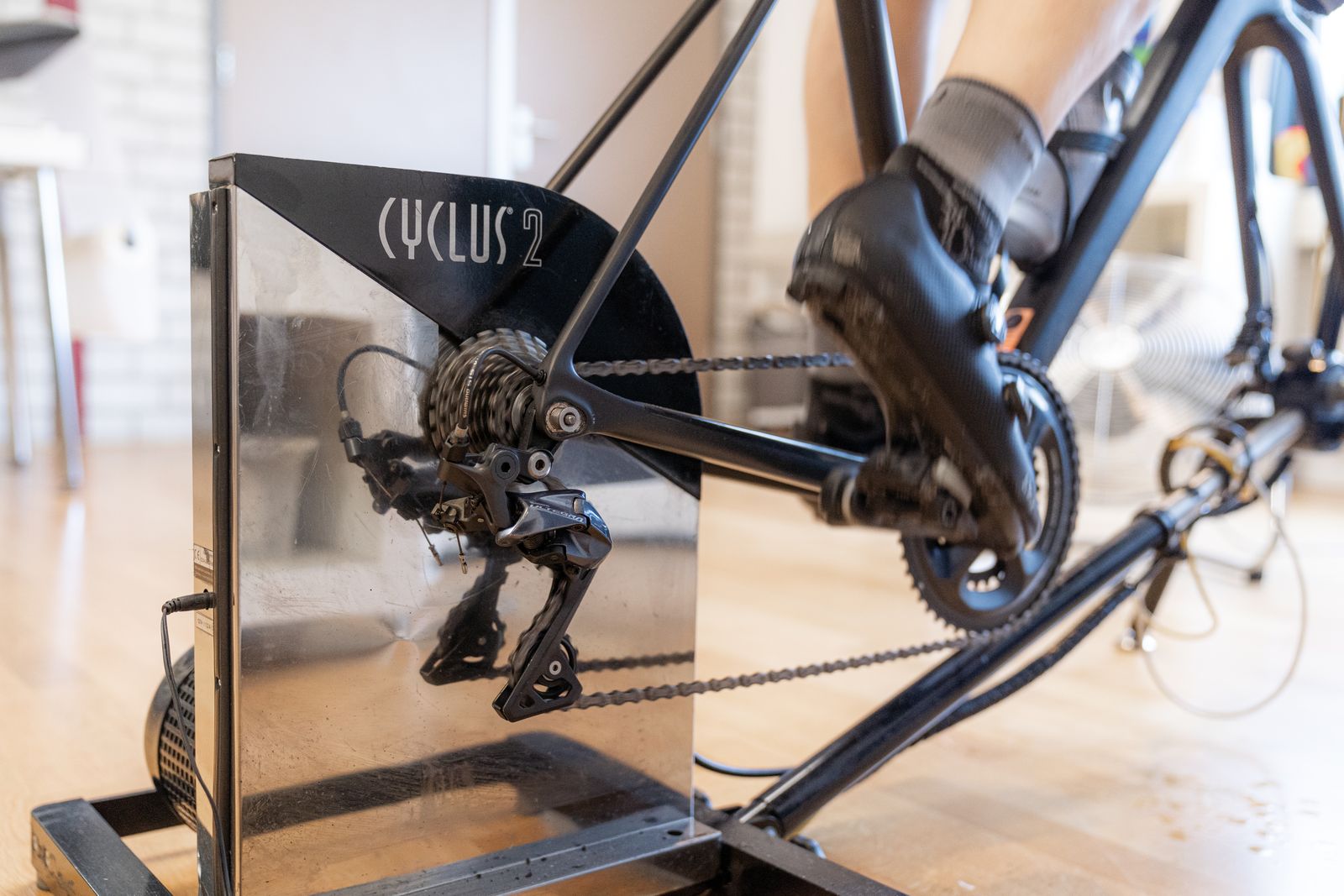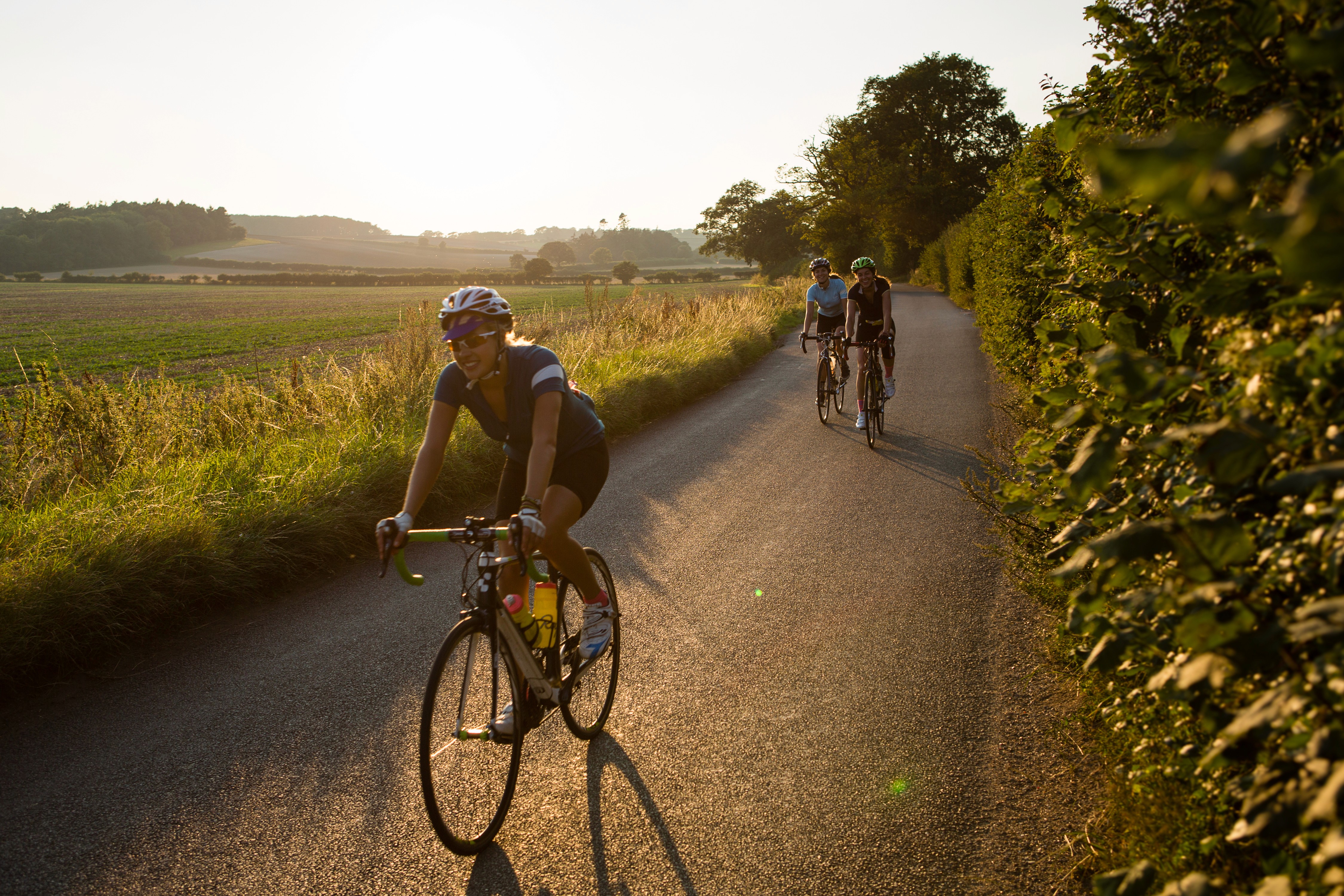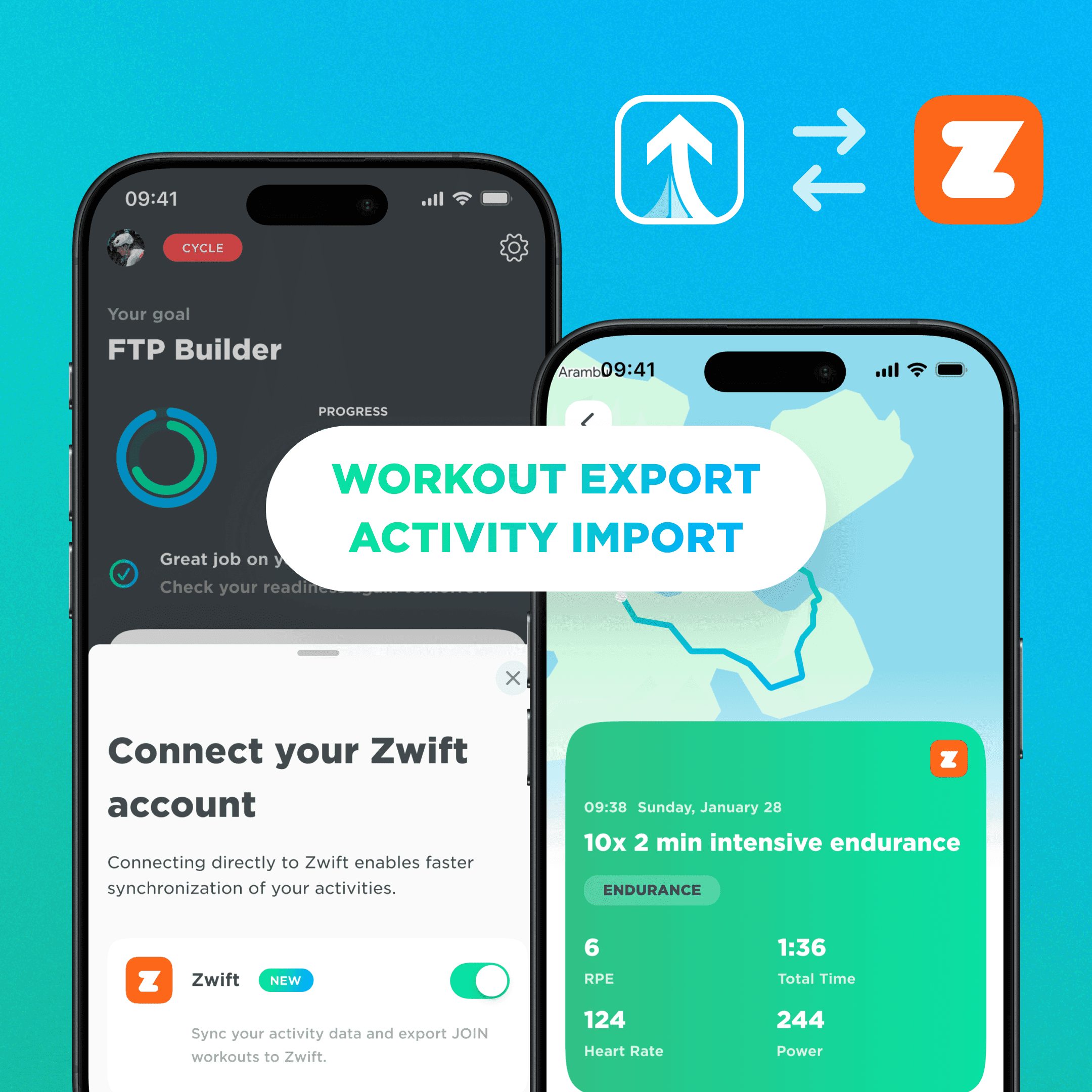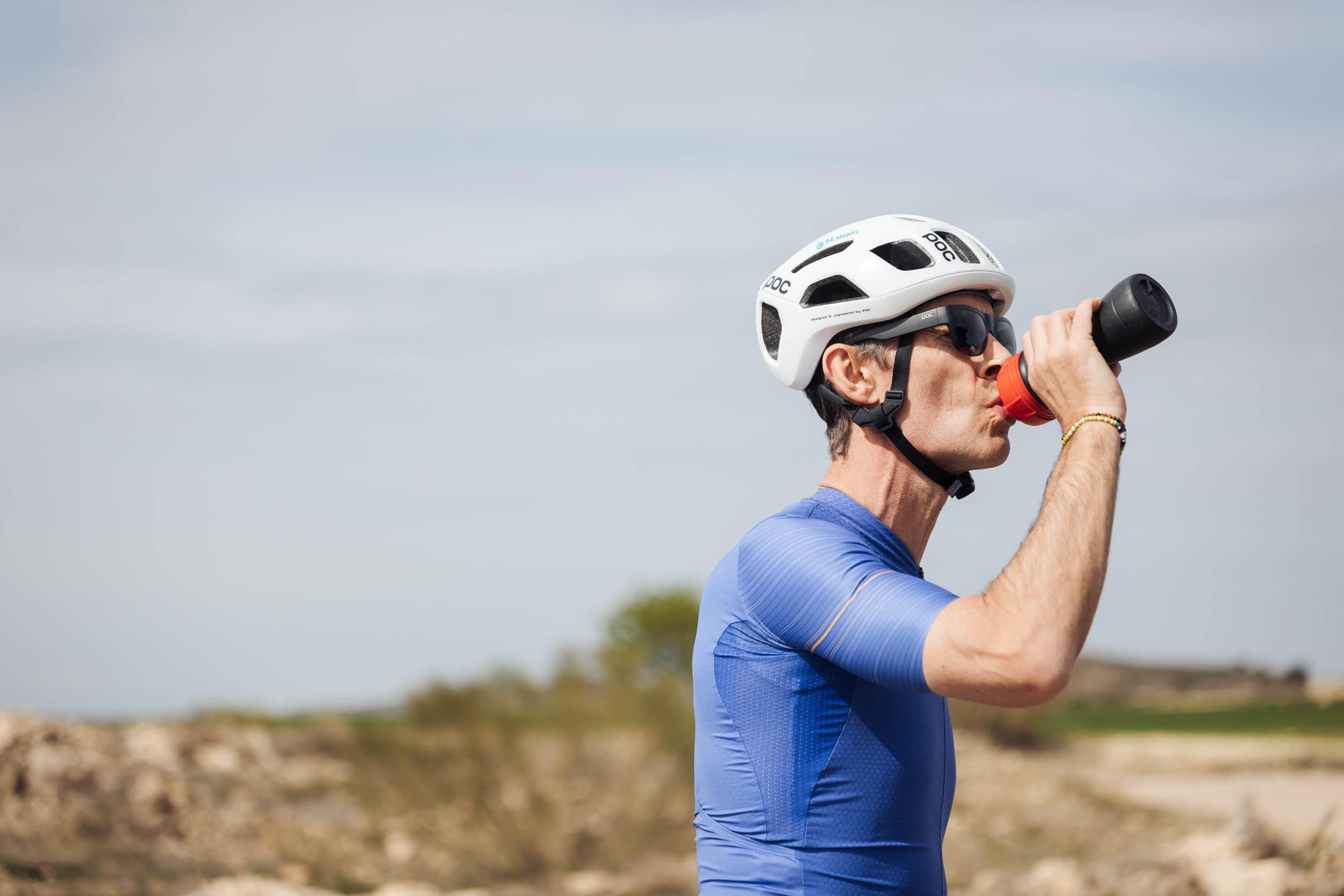Why do a warming-up?

Sep 1, 2020

Why do a warming-up?
Sep 1, 2020

Why do a warming-up?

Sep 1, 2020

Some cyclists swear by it, while others don’t see the point. Let’s look at it from the scientific point of view: what is actually happening during a warming-up and should you include it in your cycling plans?
Oxygen uptake is better at a higher body temperature
First of all, in the first part of a training session, the body temperature rises and the blood circulation accelerates. At a slightly higher body temperature, oxygen absorption improves, and thereby also the oxygen transport molecules in your blood, called hemoglobin. By warming up, more oxygen can therefore reach the muscles. Also, at a higher body temperature, the range of movement of your joints increases. A warmed-up body is slightly more flexible/less stiff.
Don’t start with an oxygen debt.
Another factor that helps to perform better after a warm-up is the fact that when you start exercising with a higher intensity, the energy supply switches from fat burning to mainly carbohydrate burning. This process triggers an increase in the lactate level and is partly anaerobic. This means that there will be an oxygen debt for a short while until a new, stable state is reached. You don’t want this oxygen debt to arise in the first minutes of your time trial or race. Maybe you have experienced this in the first minutes of a race without warming-up, where you feel really exhausted only a few minutes in. If you make this switch during a gradual warming-up, you can put the hammer down right from the gun without feeling very tired very quickly.
The effect of neuro-muscular activation.
The neuro-muscular activation of the muscles also helps them to perform better after a warm-up. This process is called post-activation potentiation (PAP). It basically means that short bouts of intense physical activity cause a biomechanical change in the muscle cells, which increases the strength of the muscles. This effect lasts only about five to ten minutes. Thus, a muscle that has already made a considerable effort is markedly stronger in the five to ten minutes after that than a muscle that makes this effort for the first time. You may have noticed that your second or third sprint in a workout is always better than the first. This is partly explained by PAP.
Getting the right mindset.
Last but certainly not least is the effect of getting into the zone. A warm-up can help you get into the right mindset with the right amount of awareness/focus to perform optimally. That’s why you often see professional cyclists warm up while wearing big sunglasses, caps and headphones, to be completely locked out from the outside world to fully focus on the job at hand.
How to do a proper warming-up.
Now that we have listed the positive effects of a warm-up, it is clear when it is necessary. It is logical that this not only applies to time trials, but to any event that will force you to go full throttle right from start. You could even argue that you should warm up with every effort. It can’t hurt to do it, right? While a warmed up muscle does indeed perform better, it is also still an effort. So don’t overdo it! Warming up for too long or too intensively can be counterproductive.
You also have a limited storage of carbohydrates in your body for about 1 hour to 1.5 hours at FTP-intensity. Emptying this storage during a warm-up ahead of an event lasting more than one hour will affect your performance. In fact, you can say that for efforts longer than an hour and a half or efforts that don’t require a hard start, it’s better to keep a warm-up to a minimum. In those cases, just a five to ten minutes warm up just before the start is already sufficient. A warm-up is also pointless if after it you will be standing still for 20 minutes, lined up in the starting grid and waiting for the gun. Save yourself the trouble in that case!
Some cyclists swear by it, while others don’t see the point. Let’s look at it from the scientific point of view: what is actually happening during a warming-up and should you include it in your cycling plans?
Oxygen uptake is better at a higher body temperature
First of all, in the first part of a training session, the body temperature rises and the blood circulation accelerates. At a slightly higher body temperature, oxygen absorption improves, and thereby also the oxygen transport molecules in your blood, called hemoglobin. By warming up, more oxygen can therefore reach the muscles. Also, at a higher body temperature, the range of movement of your joints increases. A warmed-up body is slightly more flexible/less stiff.
Don’t start with an oxygen debt.
Another factor that helps to perform better after a warm-up is the fact that when you start exercising with a higher intensity, the energy supply switches from fat burning to mainly carbohydrate burning. This process triggers an increase in the lactate level and is partly anaerobic. This means that there will be an oxygen debt for a short while until a new, stable state is reached. You don’t want this oxygen debt to arise in the first minutes of your time trial or race. Maybe you have experienced this in the first minutes of a race without warming-up, where you feel really exhausted only a few minutes in. If you make this switch during a gradual warming-up, you can put the hammer down right from the gun without feeling very tired very quickly.
The effect of neuro-muscular activation.
The neuro-muscular activation of the muscles also helps them to perform better after a warm-up. This process is called post-activation potentiation (PAP). It basically means that short bouts of intense physical activity cause a biomechanical change in the muscle cells, which increases the strength of the muscles. This effect lasts only about five to ten minutes. Thus, a muscle that has already made a considerable effort is markedly stronger in the five to ten minutes after that than a muscle that makes this effort for the first time. You may have noticed that your second or third sprint in a workout is always better than the first. This is partly explained by PAP.
Getting the right mindset.
Last but certainly not least is the effect of getting into the zone. A warm-up can help you get into the right mindset with the right amount of awareness/focus to perform optimally. That’s why you often see professional cyclists warm up while wearing big sunglasses, caps and headphones, to be completely locked out from the outside world to fully focus on the job at hand.
How to do a proper warming-up.
Now that we have listed the positive effects of a warm-up, it is clear when it is necessary. It is logical that this not only applies to time trials, but to any event that will force you to go full throttle right from start. You could even argue that you should warm up with every effort. It can’t hurt to do it, right? While a warmed up muscle does indeed perform better, it is also still an effort. So don’t overdo it! Warming up for too long or too intensively can be counterproductive.
You also have a limited storage of carbohydrates in your body for about 1 hour to 1.5 hours at FTP-intensity. Emptying this storage during a warm-up ahead of an event lasting more than one hour will affect your performance. In fact, you can say that for efforts longer than an hour and a half or efforts that don’t require a hard start, it’s better to keep a warm-up to a minimum. In those cases, just a five to ten minutes warm up just before the start is already sufficient. A warm-up is also pointless if after it you will be standing still for 20 minutes, lined up in the starting grid and waiting for the gun. Save yourself the trouble in that case!
Some cyclists swear by it, while others don’t see the point. Let’s look at it from the scientific point of view: what is actually happening during a warming-up and should you include it in your cycling plans?
Oxygen uptake is better at a higher body temperature
First of all, in the first part of a training session, the body temperature rises and the blood circulation accelerates. At a slightly higher body temperature, oxygen absorption improves, and thereby also the oxygen transport molecules in your blood, called hemoglobin. By warming up, more oxygen can therefore reach the muscles. Also, at a higher body temperature, the range of movement of your joints increases. A warmed-up body is slightly more flexible/less stiff.
Don’t start with an oxygen debt.
Another factor that helps to perform better after a warm-up is the fact that when you start exercising with a higher intensity, the energy supply switches from fat burning to mainly carbohydrate burning. This process triggers an increase in the lactate level and is partly anaerobic. This means that there will be an oxygen debt for a short while until a new, stable state is reached. You don’t want this oxygen debt to arise in the first minutes of your time trial or race. Maybe you have experienced this in the first minutes of a race without warming-up, where you feel really exhausted only a few minutes in. If you make this switch during a gradual warming-up, you can put the hammer down right from the gun without feeling very tired very quickly.
The effect of neuro-muscular activation.
The neuro-muscular activation of the muscles also helps them to perform better after a warm-up. This process is called post-activation potentiation (PAP). It basically means that short bouts of intense physical activity cause a biomechanical change in the muscle cells, which increases the strength of the muscles. This effect lasts only about five to ten minutes. Thus, a muscle that has already made a considerable effort is markedly stronger in the five to ten minutes after that than a muscle that makes this effort for the first time. You may have noticed that your second or third sprint in a workout is always better than the first. This is partly explained by PAP.
Getting the right mindset.
Last but certainly not least is the effect of getting into the zone. A warm-up can help you get into the right mindset with the right amount of awareness/focus to perform optimally. That’s why you often see professional cyclists warm up while wearing big sunglasses, caps and headphones, to be completely locked out from the outside world to fully focus on the job at hand.
How to do a proper warming-up.
Now that we have listed the positive effects of a warm-up, it is clear when it is necessary. It is logical that this not only applies to time trials, but to any event that will force you to go full throttle right from start. You could even argue that you should warm up with every effort. It can’t hurt to do it, right? While a warmed up muscle does indeed perform better, it is also still an effort. So don’t overdo it! Warming up for too long or too intensively can be counterproductive.
You also have a limited storage of carbohydrates in your body for about 1 hour to 1.5 hours at FTP-intensity. Emptying this storage during a warm-up ahead of an event lasting more than one hour will affect your performance. In fact, you can say that for efforts longer than an hour and a half or efforts that don’t require a hard start, it’s better to keep a warm-up to a minimum. In those cases, just a five to ten minutes warm up just before the start is already sufficient. A warm-up is also pointless if after it you will be standing still for 20 minutes, lined up in the starting grid and waiting for the gun. Save yourself the trouble in that case!
More Relevant Articles
Discover valuable training tips to enhance your cycling performance.
More Relevant Articles
Discover valuable training tips to enhance your cycling performance.
More Relevant Articles
Discover valuable training tips to enhance your cycling performance.

Unlock Your Cycling Potential Today
Join thousands of cyclists who have improved their performance with JOIN's training plans.
Probeer het nu
Meer Informatie

Unlock Your Cycling Potential Today
Join thousands of cyclists who have improved their performance with JOIN's training plans.
By joining, you agree to our Terms and Conditions and our Privacy Policy.

Unlock Your Cycling Potential Today
Join thousands of cyclists who have improved their performance with JOIN's training plans.
By joining, you agree to our Terms and Conditions and our Privacy Policy.
Join Now
Join Now



